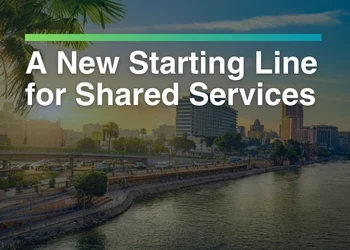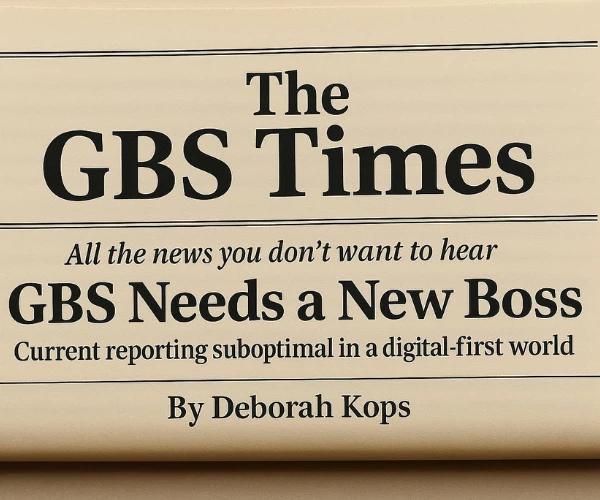
A well-run GBS organization can add value to any business process. GBS teams bring goodness in the form of precision, design, service management, agility, cost consciousness, and an ability to finish difficult things. This does not mean, however, that GBS should be involved in every business process.
If you have been following this series about building solutions that make full use of all GBS assets, you will remember that I have advocated having a specialist solution development team, and a governing method. What type of work should we target with that team and method?
In this post, I discuss two simple techniques from the field to help pick the right areas to work on:
- Select and prioritize where to play
- Key features of a pragmatic portfolio management approach.
If you are managing demand in a GBS organization, either of these might trigger useful thoughts and help you increase the value that your team adds to your business.
Why we need to be selective
It is self-evident that we cannot do everything, all at once:
Capacity. GBS teams are capacity constrained, and any new solutions work will need to use scarce talent to get it done. Solution design leaders need to be competent, trained, and experienced. There are only so many of these in any one organization. When I started leading such a team, there were six of us. At one point we had demand for more than fifty projects. I learned the hard way that trying to do everything did not just slow us, it stopped all progress! Overloaded, we prioritized, with a rough guide that each solution design lead could drive one big project and one smaller one.
Ambiguous demand. Even business leaders that want to work with GBS on their solution, do not know the art of the possible, or how to get there. The GBS team needs to help them articulate their real need. This takes time and focus. It can also annoy those that just want to get on with it, so it is important to move fast, in days, not weeks, to allow a conclusion to be reached.
Reputation for making it work. GBS teams must avoid over promising and under delivering. It is important to achieve a reputation for delivery: pragmatically finishing things, so that the solutions work, and people want more. This means seeing the work through, all the way to the point where it is effective, and then telling the story of this success.
Targeting value for the company. My last boss set a great guiding principle for our whole organization, ‘do the right thing for the company’. Although that sounds obvious, qualification is not always simple as many stakeholders want a voice and don’t want to be told ‘No’. When it comes to looking for the right areas to play, it pays to be thoughtful and principle driven.
Where to look
In the first post in this series, I gave examples of how GBS solutions could be created across the value chain of a Pharma company. If you did the same value chain analysis for your company, what would you find?
Such analysis is good for mapping the landscape, but in my experience, the biggest value emerges as the team becomes trusted and learns how to work closely with collaborative business leaders. Looking retrospectively, I can see the following drivers of solutions, in order of importance to business sponsor colleagues:
 Technique 1: Select and prioritize where to play
Technique 1: Select and prioritize where to play
So, how should you choose what to do next? I found inspiration from my role in the early 2000s, when I was the Chief Business Architect of an outsourcing business. In that case we had more than 100 potential clients in our pipeline, more than we could develop, and one of my jobs was to prioritize. Naïve as I was, I developed an elaborate spreadsheet, with the KPIs that assessed a good fit for our model. I ran this with pride, using it to qualify and prioritize, with a score of 70 out of 100 being the pre-requisite for inclusion in our active list.
A new sales director joined the organization, and he noticed that most of the deals in our pipeline were scoring in the range of 70 to 74. He asked whether I was worried that the spreadsheet was not being effective at truly identifying the best opportunities, and whether it was in fact facilitating the wrong behavior in our pursuit teams. He was, of course, right.
As an alternative, he gave me two simple questions: ‘Is there a value proposition?’, and ‘Can I sell it?’ I love this simplicity. We went on to use it in our outsourcing business, and I stole and adapted it with pride when running a portfolio for GBS solutions. The goal was to keep it very simple, with a minimum of questions and tests. For internal use within the company, we found it inappropriate to talk about selling, so we talked about ‘want’ instead:

The most important test was the charter sponsor. Of the 100s of solution projects that our team ran, I cannot think of one where we did it without sponsor involvement and support from their team. That said, sponsors come in many forms, some inevitably carry more weight than others. There were also several occasions where sponsors changed mid-flight. When that happens, you realize the importance of having strong alignment all the way up the chain.
The test for being the best place to deliver a piece of work was also important. Some tasks are simply better delivered within the functions and business units that are asking for them. For example, in one case we were asked to provide a specific set of skills to support a corporate initiative. There was a great business case, but we could not articulate why the team would not be better managed in the sponsoring function, so in the end we declined. It was an uncomfortable discussion, but good for our reputation of ‘doing the right thing for the company’.
Good and bad demand
Any one of these five tests would be sufficient to decline an opportunity, although there should be plenty of room for debate and management judgement. They helped the GBS people leading discussions with colleagues (account leaders and solution leaders) to spot opportunities that are likely to progress and succeed, as well as those that will not. To help educate the team you can create a concept of good and bad demand – for example:

Technique 2: Key features of a pragmatic portfolio approach
The practice of portfolio management can include strategic alignment, prioritization, governance, resourcing, value realization, and risk management. I will not cover all that here, but I will share a few practical techniques that worked in the field as we sought to prioritize and align around the right opportunities.

Weekly solutions call. For our GBS team, the best meeting of the week was our solutions call. This was a high energy action-led meeting, driven using an online Kanban board listing potential and active solutions. Despite being on a Friday, attendance was consistently high, including business partners, delivery leads, and solution development. Each week they shared their intelligence and offered advice and collaboration. This was the place where new business came to our attention. The main purpose was to identify and track opportunities, so we did not drop the ball, and strategize how to develop them. Qualification was formally done elsewhere, but much of the questioning and shaping would happen here.
As with the qualification criteria, this technique was modeled initially on sales meetings from earlier in my career (the Friday sales call in the consultancy Equaterra, for those of you that remember those times fondly). It was a classic agile stand-up, all about progression. One benefit was the alignment and collaboration that resulted across the team. We would all understand where we were going and how we were going to get there.
Monthly portfolio review. This was the formal governance of the whole portfolio. With more demand than we could manage, it was an exercise to allocate people and resources where they would add the most value to the company. This was a closed-door meeting with the accountable P&L holders. We reviewed the whole portfolio, across functional towers and customer groups, to make choices between competing demands.
As an important meeting with senior stakeholders, we prepared it well, with good pre-reads and self-explanatory notes on the trade-offs to be made. There was an administrative burden, but it was important. For sure this was a less fun meeting, but it was critical that we formally decided where we were going. Prioritization was not always easy. If you have to trade-off between opportunities, you will let someone down. Saying ‘No’ is hard, especially to your colleagues. Saying ‘Not now’ is easier, if it is well explained to colleagues.
So, to sum it all up, to succeed, keep it as simple as possible, involve more than just the formal decision makers in the process, and have exceptional communication to your stakeholders.
Thanks for reading. Next time, I will bring this series to a close, looking at the importance of instilling pace in solutions work, and properly embedding the new capabilities created.
Tim Palmer, Basel, October 2023
tim.palmer.gbs@gmail.com






















